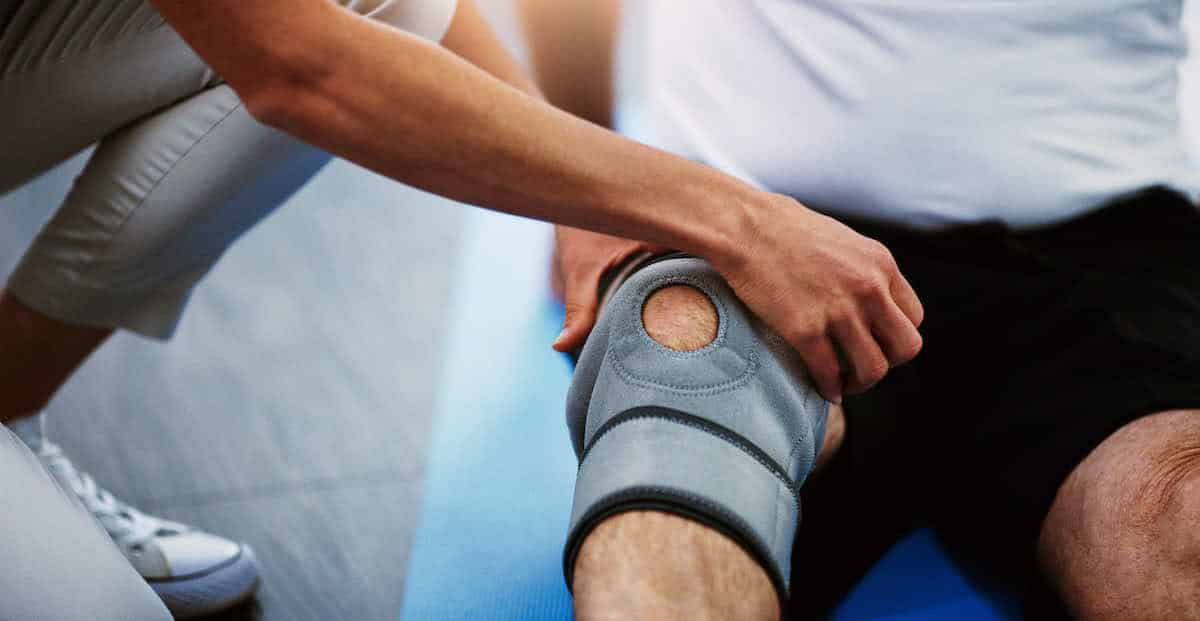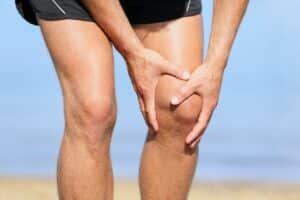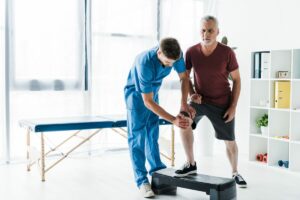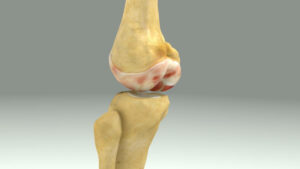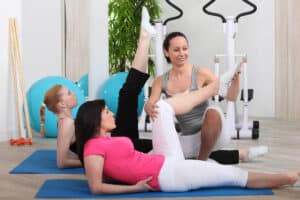Free download: Top 10 Natural & Easy Remedies for Joint Pain from Home. Learn these helpful remedies.
Estimated Reading Time: 6 minutes read
The world of knee support can be confusing, with various options available to help you stay active and pain-free. Among the most common solutions are knee sleeves and knee braces. But what’s the difference between the two, and which one is right for you?
In this guide, we’ll explore the functions of knee sleeves and braces, their suitable activities, and when to use each. Plus, we’ll introduce you to our FeelGoodLife knee compression sleeves, which can provide exceptional support for your knees.
Table of Contents
Knee Sleeves: The Basics
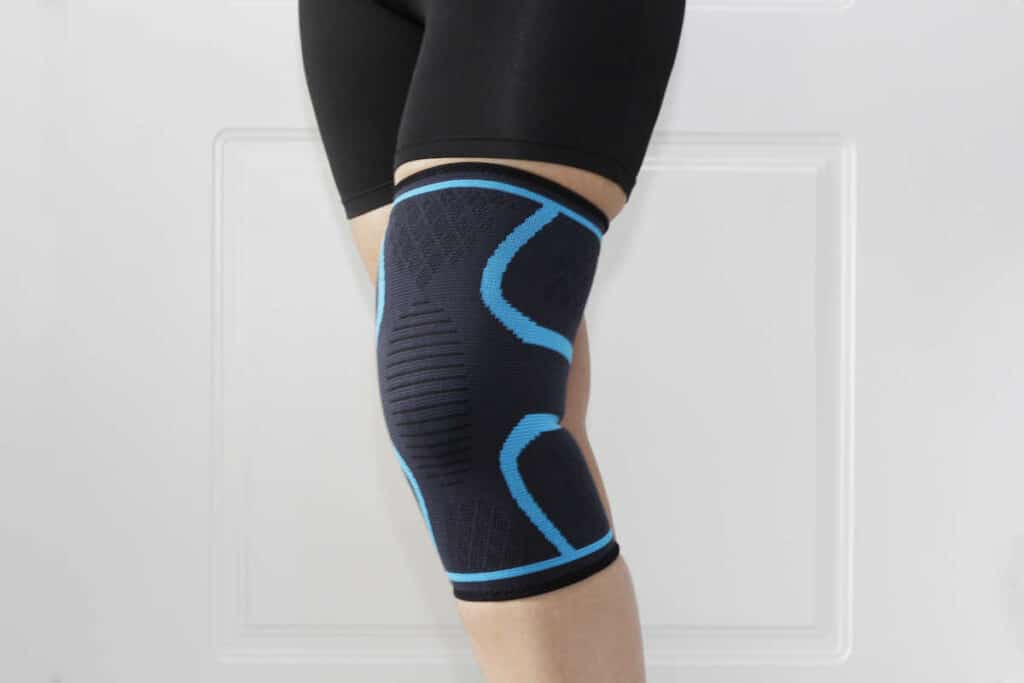
Knee sleeves are snug-fitting, elastic support garments that slide over the knee and provide compression and warmth to the joint. Made from materials like neoprene or fabric blends, they are designed to offer a mild level of support and stability, primarily during physical activity.
How Knee Sleeves Work
- Compression: By applying gentle pressure, knee sleeves improve blood flow, reducing inflammation and helping to manage pain.
- Warmth: By keeping the joint warm, knee sleeves promote muscle flexibility and can help prevent injury.
- Proprioception: Knee sleeves provide sensory feedback, helping you stay aware of your knee’s position during movement, which can improve your overall joint stability.
Suitable Activities for Knee Sleeves
Knee sleeves are ideal for seniors engaging in light to moderate activities, providing support without restricting movement. Suitable activities for seniors wearing knee sleeves include:
- Walking: Knee sleeves can make walking more comfortable by providing gentle compression, reducing inflammation, and offering support to the knee joint.
- Low-impact Exercises: Activities like yoga, tai chi, and Pilates can be beneficial for seniors, promoting balance, flexibility, and strength. Knee sleeves provide the necessary support during these exercises without hindering mobility.
- Strength Training: Seniors can benefit from incorporating light strength training into their routine to maintain muscle mass and bone density. Knee sleeves offer support and stability during exercises like leg presses and squats.
When to Use Knee Sleeves
Knee sleeves are generally recommended for seniors who:
- Experience mild to moderate knee pain or discomfort during activities but don’t require the level of support provided by a knee brace.
- Want to prevent knee injuries during exercise or daily activities, particularly if they have a history of knee issues.
- Are recovering from a minor knee injury and need additional support as they gradually return to their regular activities.
- Mild knee joint instability requires gentle support and compression to improve joint function and reduce discomfort.
Knee Braces: The Basics
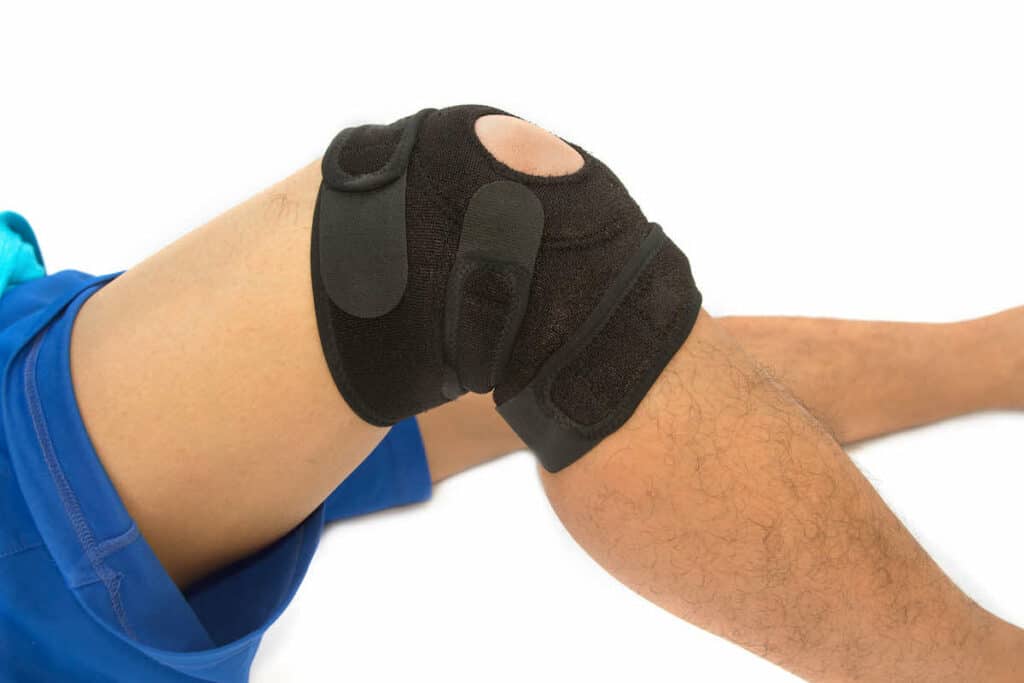
Knee braces offer higher support than knee sleeves, making them a better option for seniors with more severe knee issues. There are various types of knee braces, such as hinged braces, wraparound braces, and patellar tracking braces, designed to address different knee conditions and provide varying levels of support.
How Knee Braces Work
Knee braces work by providing four main benefits:
- Pain Relief: By applying pressure and support to the knee joint, braces can help alleviate pain and discomfort associated with various knee conditions.
- Load Redistribution: Braces help distribute the weight and force exerted on the knee joint during movement, reducing the stress on specific structures within the joint.
- Stabilization: Knee braces offer increased stability by providing external support, helping to maintain proper alignment during movement.
- Patellar Tracking: Some knee braces help guide the kneecap and promote proper tracking during movement, reducing pain and the risk of further injury.
Suitable Activities for Knee Braces
Knee braces are recommended for seniors requiring a higher level of support and stability than knee sleeves can provide. Suitable activities for seniors wearing knee braces include:
- Physical Therapy: Following a knee injury or surgery, seniors may need to participate in physical therapy to regain strength, mobility, and function. Wearing a knee brace during therapy sessions can provide additional support.
- Low-impact Exercises: Seniors advised to wear a knee brace can engage in low-impact exercises such as swimming, cycling, or water aerobics, which help maintain overall fitness without placing excessive stress on the knee joint.
- Daily Activities: Knee braces can be worn during everyday activities to provide support and stability, making tasks such as climbing stairs or standing for extended periods more comfortable.
When to Use Knee Braces
Knee braces are generally recommended for seniors who:
- Have experienced a significant knee injury requiring additional support and stability during the healing process.
- Have undergone knee surgery and need to protect and support the joint during recovery.
- Have a chronic knee condition requiring a higher level of support than a knee sleeve can provide.
- Have been advised by a healthcare professional to wear a knee brace due to a specific knee issue or concern.
The FeelGoodLife Knee Compression Sleeves: Your Partner in Knee Support
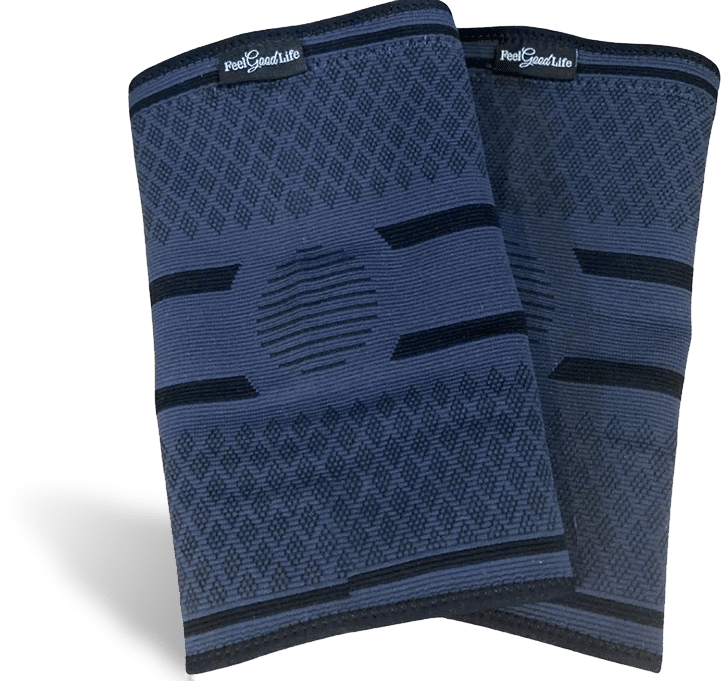
Our FeelGoodLife knee compression sleeves perfectly balance support, comfort, and flexibility. Made from high-quality, durable materials, they offer “360° Knee Protection & Comfort Technology,” ensuring your knees receive the support and relief they deserve.
Benefits of the FeelGoodLife Knee Compression Sleeves:
- Medical-Grade Compression: Our knee sleeves provide targeted compression, enhancing blood flow and reducing inflammation for instant knee relief.
- Joint Support: The FeelGoodLife knee sleeves help support your knees during physical activity, giving you greater independence and mobility.
- Custom Fit: Unlike other brands that offer one-size-fits-all solutions, we understand that proper sizing is essential for effective knee support. Measure your thigh circumference 5 inches above your kneecap, and use our sizing chart to find your perfect fit.
- 180-Day Return Policy: We’re so confident in our knee compression sleeves that we offer a 180-day return policy. If you’re unsatisfied, you can return them for a full refund.
- Comprehensive Support Booklet: Our FeelGoodLife knee compression sleeves come with an informative booklet that guides you on how to use your sleeves for deep joint healing, knee rejuvenation, and a 4-minute follow-along knee workout routine for strength, mobility, and recovery.
In Conclusion: Choosing the Right Knee Support for Your Needs
Understanding the differences between knee sleeves and braces is crucial for selecting the proper knee support for your needs. Knee sleeves, like our FeelGoodLife knee compression sleeves, are ideal for individuals looking for light support during physical activities or while recovering from minor injuries. On the other hand, knee braces are more suited to those with moderate to severe knee issues, providing additional stability and protection during activities.
By carefully considering your knee’s condition and the type of support required, you can decide which solution is best for you. And with our FeelGoodLife knee compression sleeves, you can experience greater independence, mobility, and knee health, empowering you to stay active despite any knee pain or discomfort.
So, don’t let knee pain hold you back. Embrace the support and relief offered by our FeelGoodLife knee compression sleeves, and take charge of your knee health today!


